In Part 2 of the Organics Series we looked at basic soil science 101 principles to get an understanding of what is going on in organic soil that actually provides nutrition for plants. We learned that the microorganism population is responsible for all aspects of soil and plant health, including creating vitamins, enzymes, converting inorganic compounds into organic compounds for plants, provide a symbiotic immune system for plants via mycorrhiza, rebalancing the soil with nutrients, and so much more.
We also learned that on non-organically farmed fields 85% of them are destroyed.
I postulated the question, what would happen if 85% of everything that makes you healthy was destroyed, would you be more healthy or less healthy?
In order to truly understand food & nutrition for optimal health, we must have a basic understanding and respect for optimal soil… otherwise we look at organic food at the surface of what it is when we compare it with non-organic food – usually just a label versus label and one is more expensive than the other. Combined with bogus studies often times funded by Big Food interests that get plastered all over headlines saying “There is no difference between organic and non-organic foods”… it’s very easy to see why people can get confused with organic and non-organic foods.
Optimal Soil = Optimal Food = Optimal Health
Click Here to Pin This!
In this Part 3 of the Organics Series we’re going to cover non-organic soil/conventional farming practices, and compare it with organic soil & soil science (covered from part 2), look at the studies, the health implications, myths and get more of a complete idea between the old debate and question of: Organic versus Conventional…Which should I eat for optimal health?
However… when reading, the question should not be: Will organic food make me healthy?
The question we need to be asking is:
Is organically grown food healthier than non-organically grown food?
Keep that one in mind as we review some of the evidence…
Intro
A basic understanding of organic & non-organic should be mentioned in terms of methods before we dive in:
According to the USDA: Organic is a labeling term that indicates that the food or other agricultural product has been produced through approved methods that integrate cultural, biological, and mechanical practices that foster cycling of resources, promote ecological balance, and conserve biodiversity. Synthetic fertilizers, sewage sludge, irradiation, and genetic engineering may not be used.
For the most part, how Mother Nature designed soil. We discussed in Part 2 much of the soil science that is related to organic soils and the importance to plant nutrition.
Non-organic farming, also known as conventional or commercial farming, is pretty much the opposite of organic. Synthetic fertilizers, sewage sludge, irradiation, genetic engineering (GMO), as well as toxic pesticides, are all used. Cycling of resources is not used (rotation crops, compost, etc), as well as ecological balance and biodiversity is not conserved (reviewed in Part 2).
History – How did non-organic farming start?
All the way up until about the industrial revolution, everything was technically farmed, grown, raised, hunted, and gathered organically, or for the purpose of the comparative, without chemical fertilizers and pesticides. So everything your great or great great grandparents and everyone before them in your family to the beginning of human history essentially ate was 100% organic food sources. I tend not to use the word “natural food”, because the term ‘natural’ today means nothing (i.e. if you see a label that says ‘all natural’, by law it means nothing).
Nutshell: So from the beginning of human history up until 1840, a man by the name of Justus Von Liebeg developed a theory about plant nutrition, in that mineral salts (today is NPK fertilizer – nitrogen phosphorus potassium) was all plants needed to grow and be healthy. Grow, yes.. internally healthy, no (more on that below).
Fast forward circa early 1900’s when chemists developed an ammonia process utilizing nitrogen from the air (our air is ~78% nitrogen), a process that was also used for chemical warfare to make explosives for World War I. After WWI these same chemical companies that designed chemical weapons now needed a new market to stay in business now that the war was over, and the same process was used to make chemical fertilizers for agriculture use. In World War II, nerve gas used in chemical warfare was slightly modified to make insecticides.
Chemical fertilizers and pesticides like insecticides to this day are still being used.
As we’ll see from more of the evidence throughout this article, as well as already discussed in Part 2, when we add mineral salts (fertilizer) and pesticides to the ground, we severely disrupt the microorganisms population and closed organic cycle (the symbiotic ecosystem that is responsible for plant nutrition), which leads to nutrient deficient soils, plant disease and “pests” taking over.
It analogous to us, really.. if our internal ecosystem of microorganisms (specifically, microflora & our gut health) is disrupted and out of balance, or dysbiotic, we too can get diseases and pests take over (we know those “pests” as fungal and parasite infections). As Hippocrates said a long time ago, “all disease begins in the gut”.
Chemical Fertilizers & Pesticides
Non-organic farming practices utilize synthetic fertilizers (NPK) and pesticides.
NPK fertilizers stands for Nitrogen Phosphorous & Potassium. Why these three elements in the equation? In a nutshell, Nitrogen promotes growth in leaves/vegetation, Phosphorus promotes root growth and Potassium promotes flowering/fruiting. They essentially make nice, big plants and fruits of those plants, to the eye.
As Liebieg’s theory for growth was true, these do help plants grow in a “surface”-sense. As for under the surface and plants being healthy internally with vitamins, minerals, trace minerals, secondary nutrients, etc.. not so much, that’s where the microorganisms come in and to the degree they are impaired, nutrition for plants is impaired (see part 2).
Pesticides can be anything from herbicides (kill weeds), insecticides (kill insects), rodenticides (kill rodents), and fungicides (kill and control fungi), and more. They are broken down into two primary classes: Neurogenic and Estrogenic. Neurogenic is designed to disrupt the nervous system and kill “pests”. Estrogenic designed to disrupt reproduction. So in effect, they can’t proliferate and die off.
Problem is, these toxic residues end up in our body and do the same things. A European Commission report showed clear evidence that 34 pesticides are endocrine disruptors or potential disruptors. Endocrine = your hormones… and they play a part in every biological system of the body.
But Jon, don’t they regulate pesticides to be used at “safe limits”?
There’s two things to look at here.
One, the makers of pesticides usually provide their own research of what is “safe” as well as the regulators are tied to the pesticide industry (conflict of interest).
Two, when multiple pesticides chemically interact and summate, or “add up”, to more than a safe limit.
A recent study by BioMed showed that pesticides are far more toxic to human cells than the chemical companies have led us to believe, and when you use multiple pesticides on crops, it can increase the interactive potential in dermal (skin) and dietary exposure. In fact, researchers examining dietary exposures have found that mixtures (such as insecticides, herbicides and nitrate at low concentrations that are legally permitted in ground water) can have effects on the reproductive, immune and nervous systems that individual chemicals do not have[1]. What this means is, even though all pesticides, individually, have different set (misled) limits for “safe levels” that can be used, when combined have an even more potent, toxic effect. American researchers who combined three pesticides at safe levels found that this combination multiplied total toxicity by hundreds of times[1].
This is nothing new of chemical companies claiming their chemical pesticides to be perfectly safe for us. Pesticides like Dichloro-Diphenyl-Trichloroethane, or DDT, was discovered in 1939 as an effective insecticide for controlling pests and was advertised as perfectly safe.
Yet 20 years later 86 countries banned it’s use [2]. Today it is banned for use in the U.S., but is still used in less developed countries. It has been linked to chronic pathology and disorders of the nervous system, reproductive system, immune system, kidneys, liver and some cancers (see extensive toxicology of DDT here). The problem is, even after these chemicals are banned, they still show up in our food 4o years later, as well as our water.
According to the EPA pesticides use report, over a billion pounds of pesticides are used in the United States each year. Worldwide, approximately 5.6 billion pounds are used.
Today we use chemical pesticides like:
- Atrazine: carcinogenic, reproductive problems and more. Here is a fantastic video by scientist Tyrone Hayes discussing it.
- Captan: carcinogenic, genetic and immune system damage[3]
- Chlorpyrifos: endocrine disruptor, impairs immune response, reproductive abnormalities, damage in developing nervous system and brain[3], as well as linked to ADHD and reduced birth weight.
and these are only to name a few… many MANY more are used, including the herbicide called Round Up used for GMO crops which has been linked to a plethora of problems, including pre-mature death, severe organ damage, increased tumors and more published in the The Food & Chemical Toxicology Journal (if you want an extensive breakdown on GMOs, read this series by Jeffrey Smith).
There is a growing body of evidence in the medical literature demonstrating the detrimental health effects of pesticides on human health. As many are fat-soluble, pesticides can accumulate in lipid-rich tissues (your fat cells). Biological half-lives of several years have been reported in human beings for some compounds, and there is particular concern regarding possible neurobehavioral and neurotoxic affects, mutagenicity (genetic mutations), teratogenicity (developmental malformations), carcinogenicity (cancer), and allergic and other immuno-regulatory disorders[1].
American researchers have linked symptoms such as headaches, tremor, malaise, lack of energy, muscle weakness, depression, anxiety, poor memory, loss of coordination, dermatitis, convulsions, nausea, vomiting, indigestion, and diarrhea, with pesticide levels in patients’ blood streams[1]. Other effects include chronic fatigue, peripheral neuropathy, neurobehavioral and cognitive abnormalities and autonomic nervous system disturbances[1].
Well, we have to use non-organic farming practices with these pesticides to kill the pests or we won’t be able to feed the world, right?
It may seem logical to think more pesticides and fertilizers = less pests and more crops, but in fact, it’s the opposite. Numerous studies have shown a link between NPK fertilization and increased plant susceptibility to pests and disease, necessitating the use of pesticides[1]. Remember in Part 2 of this series, we saw that the symbiotic mycorrhiza fungi function as an immune system and help protect the plants, fighting off plant parasites and more. Well what happens when we spray fungicides on fungi? Adios plant immune system. In fact, as agriculture has developed and become more intensified, crop losses due to pests and disease have increased[1]. Crop losses due to insects have increased by around 20 per cent since 1945 despite a 3,300 percent increase in the amount of pesticides used [4].
The debate that Big Ag, non-organic farming can only feed the world is an exhaustive one and often used by the Big Ag interests to sell their own product. The British Soil Association reviewed 98 published papers regarding organic farming yields and found that each had the potential to feed the world and not one argued otherwise. Organic farming can in fact yield three times as much food on the same amount of land as non-organic, conventional farming practices. The problem isn’t food production, the problem is food waste. In the U.S. alone, 40% of food is wasted.
Pesticides in organic farming
I would be remiss if I did not mention that a small number of pesticides can be used in organic farming, contrary to public perception. In organic farming, the approach is much like someone eating for health rather than eating for dis-ease: prevention. Organic farming practices build healthy soil, and thus healthy plants that are usually able to resist disease, pests and more (non-organic the opposite: unhealthy soil, more pests, thus more pesticides). When pest control gets out of hand, only then can the farmer get permission from the certifier to apply botanicals (derived from plants) or other applications that are on the national list. According to Oregon Tilth, one of the certifiers I respect as having high quality standards, “there are a limited number of exceptions found in the US Department of Agriculture’s National Organic Program (NOP) rule [7 CFR 205]. Naturally occurring active ingredients, such as plant extracts, insect pathogens, and fungal derivatives may be used, provided they are not explicitly prohibited on the National List [205.602]. The standards also permit a few synthetic pesticides that are relatively low risk or have a non-toxic mode of action.”
In other words, in organic farming, they do not use the most toxic, synthetic Big Ag chemical pesticides used as “routine” in non-organic conventional farming, like we’ve discussed above, and they only use pesticides in times of emergency (for example, entire crop loss) and must get permission first to use them.
Organic vs. Non-Organic Foods – Nutritional Quality
So far we’ve learned non-organic agriculture practices spray billions of pounds of chemicals on our foods, we’re losing more crops, not gaining, and the health implications can be severe. So, what about the nutrition in the food?
As early as 1936, discrepancies were being pointed out to congress on the condition of Big Agriculture, non-organic soils.
One excerpt:
The alarming fact is that foods — fruits and vegetables and grains — now being raised on millions of acres of land that no longer contains enough of certain needed minerals, are starving us, no matter how much of them we eat.
— U.S. Senate Document 264, 1936
Remember our brief history section above and the timeline in a short span of about 100 years from the concept of chemical fertilizer farming of 1840 by Liebig, to the implementation, to the concerns by 1936. This is but a flash in the pan of human history that nutrients are being depleted from the non-organic soils. I’ll also note, after reading that excerpt, remember in part 2 we talked about how microorganisms perform chemical functions in the soil, re-balance it with nutrients, create vitamins, minerals, enzymes and more (but research showed 85% of them destroyed in non-organic, chemical/pesticide-laden soils).
When you kill 85% of the very SYSTEM responsible for nutrients being in the soil and recycled in soil, is it any wonder why our soils became depleted?
And this was almost 80 years ago… you think it’s better today?
The following studies should also be noted as they provide important supplemental information for nutrient comparisons:
Data from the Department for the Environment, Food and Rural Affairs (DEFRA) shows that between 1940 and 1991, trace minerals in UK fruits and vegetables fell by up to 76%, and the United States Department of Agriculture figures show similar declines[5].
A $25 million dollar 4-year study on organic food called the Quality Low Input Food Project found organic food is far more nutrient dense than non-organic conventional food. The study found organic fruit and vegetables contain up to 40% more antioxidants and much higher levels of minerals.
In a meta-analysis comparing 400+ organic & non-organic soil studies titled Organic Farming, Food Quality and Human Health, just a few of the studies showed:
- Significantly higher levels of lycopene (a carotenoid) were found in store-bought organic tomatoes than in non-organic.
- Potatoes grown without pesticides had an average of 27% higher glycoalkaloid concentrations than non-organically cultivated potatoes… and another showed a 10% higher polyphenol concentration in organic potatoes
- Organic apples were found to have an average of 18.6% more phenolic compounds (mainly flavonols) than fruit from non-organic.
- Wine was shown to be 26% higher in resveratrol, the phenolic compound in red grape skins.
Another meta-analysis[6] titled “Clinical Evidence Supporting Cancer Risk Reduction with Antioxidants and Implications for Diet and Supplementation” which reviews many different cancer treatments and the importance of different levels of antioxidants, phytonutrients and more (nutrients like carotenoids, flavonols, etc we’ve mentioned above) says:
The issue of what are the relevant nutrient levels in those U.S. foods being suggested as the basis for cancer prevention diets is confounded by recent data also from the U.S. Department of Agriculture that shows as much as 50% fall in the content of various nutrients of fresh vegetables (e.g. vitamin A, riboflavin, calcium, niacin) over the past 25 years in the U.S.
In the treatment of cancer, phytonutrients have been identified in the literature as having beneficial effects through various mechanisms, including quenching free radicals, acting as anti-proliferative agents, inducing detoxifying enzymes, inducing differentiations of cancer cells, inhibiting metastasis, stimulating the anti-tumor activities of the immune system, and inhibiting tumor blood vessel formation[1].
Is it any wonder why alternative cancer treatment centers around the world like Gerson use strictly organic foods to rehabilitate patients? Clinical evidence comes from doctors and nutritionists administering alternative cancer treatments who have observed that a completely organic diet is essential for a successful outcome[1]. If organic foods are part of the cancer rehabilitation protocol, then wouldn’t that make them important in the prevention of chronic pathology & disease?
“The soil is our external metabolism. It must be free of herbicides and pesticides or the body cannot heal”
Dr. Max Gerson, M.D.
Going back decades, the evidence is strong that the nutrition is superior in organic foods versus non-organic.
Overall, organic food has lower levels of contaminants, such as pesticides, antibiotics and nitrates and higher levels of a variety of essential nutrients. One literature review confirmed that, despite varied research methods, there is a trend towards fewer undesirable components or contaminants, and higher desirable components (such as vitamins) in organic food compared with non-organic food[1].
But Jon, I don’t get it, I read an article that said there is no difference in organic and non-organic foods?
One of the things I hear a lot from individuals I consult with, as well as colleagues, doctors and others, is that there is no difference in organic and non-organic foods. Usually its, “Jon I read and article that said there’s no difference in organic foods so why should I pay more”. I’ve read them too, and often times they are flawed and/or have money interests behind them. Just one recent example that was plastered all over main media outlets, the Stanford study in 2012, claiming there is little evidence of the health benefits of organic food. After you do a little digging, you find out that one of the biggest processed food companies in the world, Cargill, amongst others, were behind the study (and thus, the “results” of it). This would be a conflict of interest, especially from a company that stands to benefit (read: profit) from the demise of organic farming and the prevalence of chemical and GMO farmed goods as acceptable in every family home. Mark Bittman, journalist for the New York Times also has a good article, “The Flawed Stanford Study“, you can check out for more on the topic.
Overall, there are a lot more studies on nutrition quality, and it’s tough to deny many of the studies we looked at above, especially when we remember the study in Part 2 comparing organic & non-organic soils and that 85% of the microorganism population that is responsible for so many aspects of plant health (and the nutrients in them that we eventually eat), are destroyed in non organic soils from the use of chemical fertilizers and pesticides.
Nutrition IS the vitamins, minerals, phytonutrients, flavonols, carotenoids, etc listed above that we only get from our food. There are some 5,000-10,000 secondary compounds in plants [3], many of which we still don’t know all that they do, yet many we do know are beneficial to health. The Organic Farming, Food Quality and Human Health report I cited above alone has 57 references supporting increased levels of secondary nutrients in organic produce and their beneficial effects.
So if there is significantly less nutrients in our food, there is significantly less in our body.
They’re not in our body because they’re not in the plants, or the animals who eat the plants.
They’re not in the plants and animals because they’re not in the soil.
I’ve said it before and I’ll be a broken record to the day I go back to the soil myself… health begins in the soil, and the evidence and studies shows us what happens when soil is impaired through non-0rganic agriculture practices that are ran and controlled by pesticide & chemical companies.
The Double Edge Sword Effect
The “double edge” sword effect is a term I’ve been using for years that is pretty simple when it comes to comparing organic & non-organic foods.
Higher Toxic Load (non-organic food) + Less Nutrients (non-organic food) = Less Optimal Health
Higher toxic load = evidence reviewed in the pesticide section. Less Nutrients = evidence reviewed in the nutrition quality section, as well as Part 2 of this series.
In other words, non-organic foods is the consumption of food with higher pesticide residues (toxic load) and contain less nutrients within them to combat said toxic load. It’s a double-edge sword effect. The “reverse math” to the double-edge sword equation, comparatively would be:
Less Toxic Load (organic) + More Nutrients (organic) = More Optimal Health
Healthy soil is foundation… and optimal soil = optimal health.
In Summary
Food is designed to sustain life and give you health, vitality and energy. A basic google search of the definition of food shows us food is:
any nutritious substance that people or animals eat or drink, or that plants absorb, in order to maintain life and growth.
Does the source of “food” we talked about in this article fit that definition? Nutritious? Maintain life & growth?
The very definition of food in my opinion fits none of the evidence we looked at for non-organic chemical & pesticide farmed foods, but more so fits “food-like products” disguised as food that are designed for making money, not making health.
The question I posed at the beginning was, not, will organic food make me healthy? The question to ask is:
Is organically grown food healthier than non-organically grown food?
That answer should start to become more evident after our review of soil science in Part 2, and now our review in part 3 of chemical fertilizers & pesticides, nutrient quality and overall affects on health.
Stay tuned for part 4 in the series…now that we have a basic foundation of what goes on in the soil and the differences in the organic and non-organic, we’ll be looking at:
- buying organic on a budget
- organic vs. non-organic food pricing, misconceptions and hidden costs
- where to locate and find deals on organic foods
- what to look for on labels (and some of the tricks food industry plays on us!)
- and a lot more
Hope you enjoyed the material!


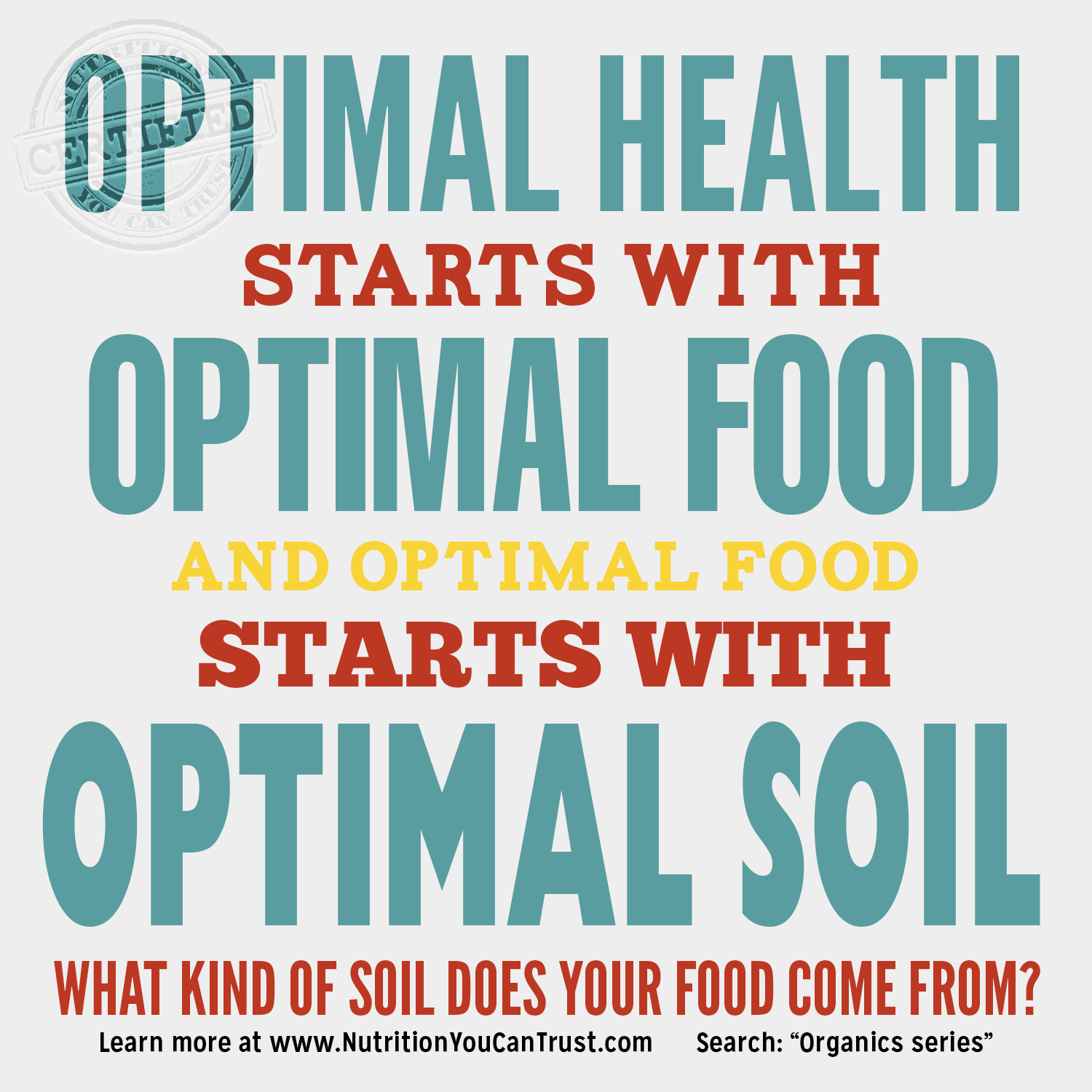
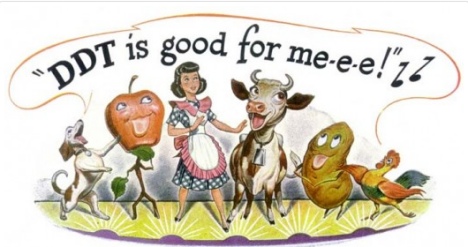







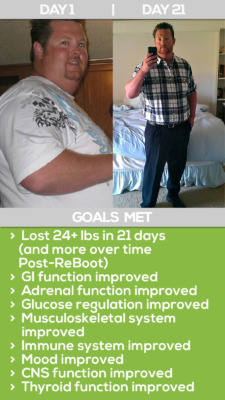




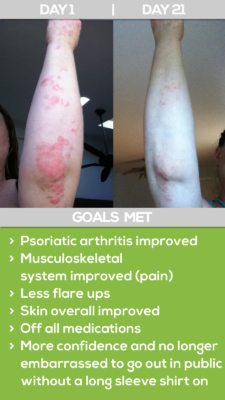



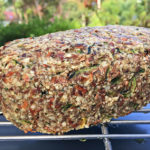



Very informative Jon, thank you
Thank you Tracy, you’re welcome!
To answer your question, Yes it’s healthier!!! 🙂
Awesome Frances!
Great post mate
Cheers Chris, glad you enjoyed
Hi Jon, I just wanted to let you know I thoroughly enjoyed reading this and really appreciate your blog, instagram and twitter. Thank you for what you do.
Very humbling Meghan, I appreciate your kind words and glad you enjoy following